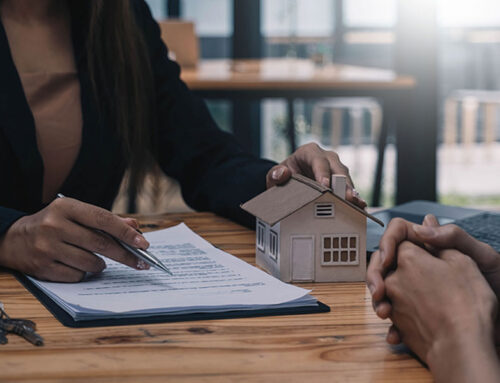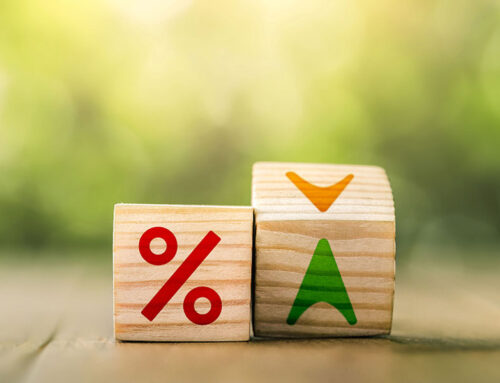According to the 70% rule, a house flipper should never pay more than 70% of a home’s after-repair value for a property, less the renovation costs. Under the 70% rule, a house flipper should be left with 30% for holding costs, closing costs, and profit.
One of my kids’ teachers, Mr. Warren, took me aside after our parent-teacher conference the other day to ask what is the 70 rule in house flipping? Interested in pursuing a part-time career in real estate investing, he’d started doing some research on buying and holding properties as rentals only to decide that being a full-time landlord wasn’t for him. On the other hand, flipping houses seemed both manageable and potentially profitable—assuming he could successfully grasp the rules of the game.
Having been a real estate investor for many years now, I could confidently say that it’s certainly possible to do a good business out of flipping houses. But, following these hard and fast rules is not always the way to do it. So, I told him once he wrapped things up for the day, I’d be happy to help him wrap his head around the ‘70% Rule’ as well as other, possibly better, rules of thumb to consider when investing.
What Is the 70 Rule in House Flipping?
The ‘70% Rule’ refers to a formula that many real estate investors use to determine the price they should pay when they find a fixer-upper home for sale that they intend to rehab and resell. This number is critical for making a profit in house flipping. If you pay too much for a house initially, you could pay for it on the sell-side when the returns you wanted don’t come to pass. And, if the market won’t bear it, you can’t raise your asking price to compensate for a high buying price. Hold out for a higher price, and you may not be able to sell your investment property at all.
The 70% rule was created to help you buy a property at a number that leaves room for realizing a return on your investment (ROI). If you want to see any returns, the rule states that you should only pay 70% of a property’s after repair value (ARV), minus your rehab costs. Otherwise, you risk thinning out your profits if you see any at all. Here’s the formula:
(ARV X .70) – Rehab Costs = Maximum Purchase Price
To illustrate, let’s take a look at a home with an ARV of $200,000. Using the 70% rule, you would first multiply $200,000 by 70%, or .70. Next, you would subtract all of your repair and renovation costs, from removing old carpet in the bedrooms to the addition of new appliances in the kitchen. Assuming you could perform a home inspection and confirm that you weren’t at risk of buying a money pit, let’s say your rehab expenses top off at about $39,000. You could potentially go as high as $110,000 on your offer with those numbers in mind. Here’s the formula with our numbers plugged in:
($200,000 X .70) – $39,000 = $110,000
A word of caution is necessary here. Be wary of a variation on the 70% rule that has you calculate the numbers a bit differently. This version, taught by some ‘gurus’ out there, suggests you subtract your rehab costs from the purchase price and then multiply by 70%. This skews the results by factoring in less than 100% of your expenses. Using the example above, let’s see how this plays out.
(Purchase price – rehab costs) X .70 = Maximum Purchase Price
$200,000 – $39,000 X .70 = $119,000
The second variation of the ‘70% Rule’ suggests that you have an extra $9,000 to offer the homeowner. This difference can affect how much money you can make flipping a house—or, whether or not you can possibly break even.
Why the 70% Rule Should Be More of a Suggestion Than a Rule
Even if you use the correct formula, you’ve got to ensure that all of your numbers are right. That means you have to correctly assess your property’s ARV and evaluate the cost of repairs.
To estimate the ARV you need to have some understanding of your local market and know how to compare homes of similar size, style, age, and condition that have recently sold nearby. And, to accurately account for the renovation, you’ll need to know a thing or two about local material and labor costs or get multiple estimates from individual experts.
It’s not a bad idea to have a real estate investment valuation tool on hand that covers all those bases to help you run your numbers. These points are critical to keep in mind since no known rule will rescue a bad deal if your calculations are wrong.
Additionally, there are other factors to consider when offering a property. If houses aren’t selling in a particular neighborhood, for example, then it’s not going to matter what percentage you’re at. Or, if a neighborhood is on the rougher side of town, you may not be able to sell it for much more than you bought it for—even if it is the nicest house on the block. Location is important when buying, renovating, and selling houses for profit. But, so is how you renovate, for whom, and during what season.
If you create a cool bachelor pad where mostly established families and retirees buy, then try selling it during the winter because you rehabbed it during the fall, you could end up holding it so long that your returns come in at zero.
Rather than adhere to one rule of thumb when figuring out the ideal price of buying a property, consider all of the elements that might affect your numbers. And, when it comes to those numbers, consider the cost of miscalculating them—then, go out and get access to some of the best tools to make sure that you don’t.
Hot Markets and the 70% (Or 85%) Rule
In hot markets, the 70% rule doesn’t always pan out. So much so that some experts suggest that you change it to an 85% rule.
Let’s say that a home is currently on the market. You estimate that with $20,000 in repairs, you could sell the property for $600,000. Your 70% rule would be:
($600,000 x .70) – $20,000 = $420,000
But wait. The property is already on the market for $500,000. What’s happening? Well, the 70% rule doesn’t really work in hot markets because people are more willing to pay for the property and the land than upgrades, renovations, or style. The house itself has so much inherent value that even significant investments and upgrades won’t move the needle.
Now, in a market that isn’t hot, this calculation still works: It just tells you that this property isn’t worth buying. But there are markets in which all properties will be priced that high. In these markets, it’s more about reducing your expenses and being clever about the repairs and renovations you commit to.
In many ways, hot markets are outliers. But even in more sedate markets, mistakes can be made when following the 70% rule.
The 70% Rule and House Flipping: Estimating Time
Any “rule” in house flipping is a bad one. I quickly discovered that while some things are set in stone, more things are constantly changing. As I worked my way out of the era of linoleum and into the age of luxury vinyl plank, I found that the 70% rule was, more often than not, incorrect.
The biggest issue I had to consider was what I mentioned before: the 70% rule didn’t really think about time. Some of my flips would take weeks. Others would take months. I even had one flip that I ended up holding on to for two years (never do this).
If you have an 80% flip that you can get out in a week, why wouldn’t you? While the repairs might be a strain on you, you’re not going to have any of the associated holding costs. Likewise, if you have a 70% flip that will take up all your time for a year, it’s just not worth it.
There’s no easy rule for estimating time, so an investor needs to rely on their tools and also follow their instincts. If you have the correct data to begin with, it helps.
Estimating Repairs When Calculating the 70% Rule
Recall that the 70% rule requires that you subtract the cost of repairs. When I discussed this with Gerald, he immediately asked: But how do I know how much the repairs will cost?
It was a good question to ask. Someone more knowledgeable about the field would have never asked that question—they would have felt confident about their answer. And they would probably have been wrong.
When I was starting to feel confident about my place in the house flipping market, that’s when I experienced my most significant losses.
In the very beginning, I was very conservative with my repair estimates. If I thought it would be $15,000, I’d plan for $30,000. Over time, though, I became more confident and felt that I could assess my repair estimates more accurately.
But I couldn’t and you probably can’t, either. Many of your repairs come down to individual contractors, who you can’t control. And there will always be situations in which you find out there’s more damage under the hood than you expected.
Be conservative with your repair estimates, and you’ll have far less likelihood of blowing out your budget. The 70% rule relies on you estimating value and repairs correctly—but without a system like ValueChek®, that can be incredibly difficult.
Selling Your House by the 70% Rule
Apart from repairs, you need to essentially “assume” how much you can sell the property for. Let’s go back to the example. We have a property that we believe we can sell for $200,000. We think it needs $39,000 in repairs. So, we know we can spend $119,000 on it.
But how do we “know” we can sell it for $200,000?
It can be hard to determine how much a house will actually sell for in hot markets. And in slower markets, it can be hard to tell how much the market will bear.
Data drive ValueChek® software—comprehensive data that doesn’t just provide estimates of a property’s current value and repairs, but also offers evaluations for similar properties. This takes a significant amount of the guesswork out of the process.
A Better Rule of Thumb Is to Have the Best Tools
Like Gerald, I started investing part-time while working in another field. Unlike Gerald, I didn’t do nearly as much research on successfully building a business by flipping houses.
Instead, I read about the ‘70% Rule,’ then ran right out and tried to implement it on my first deal. And, since I miscalculated my rehab costs and paid too much for the house, that first deal fell flat. Had I not become an independently owned and operated HomeVestors® franchise shortly after that, my career might have flatlined, too.
By joining the HomeVestors® team, I gained immediate access to HomeVestors® proprietary analysis and valuation software, ValueChek®. So, correctly calculating repair costs becomes much more accessible, making buying houses at the right price less of a challenge.
When you’ve got a great tool like ValueChek®, you’ve got a great chance to make a solid career out of investing in real estate. And, that is a much better rule of thumb for realizing good returns than following any hard and fast house percentage formula.
Want to learn more about what is the 70 rule in house flipping? Contact HomeVestors®, the best real estate investor franchise.
Contact
"*" indicates required fields








